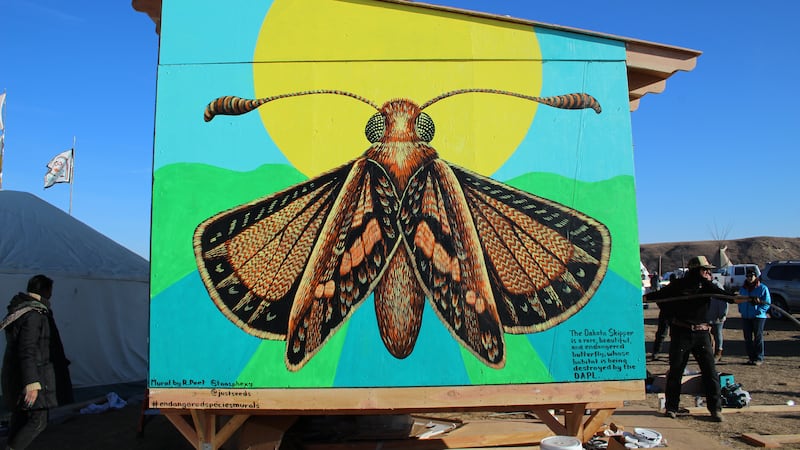Portland-based artist Roger Peet has installed a mural of an endangered butterfly at the Oceti Sakowin camp at Standing Rock.

Peet is known for his project IN//APPROPRIATE, which explores political correctness and cultural appropriation, as well as art about conservation and environmental issues.
He leads the Center for Biological Diversity's national endangered species mural project, which increases awareness and appreciation for endangered species through a series of paintings around the country.
The painting of the Dakota skipper butterfly at Standing Rock is the 10th mural in the project. In addition to the pipeline's threat to people's lives, water and land, it will also threaten the Dakota skipper butterfly, which has been protected under the Endangered Species Act since 2014.
"The Fish and Wildlife Service basically signed a permission slip for energy transfer partners to destroy this butterfly habitat, which is federally protected. It's just one more example of, 'you're not supposed to do this,'" Peet tells WW. "The butterfly is a small thing. It's not a very dramatic creature. It's about an inch long, but it's part of the great community of life that exists on the plains."

According to the Center for Biological Diversity, the Dakota skipper butterfly is one of 19 species that will be harmed by the pipeline, including the pallid sturgeon, Topeka shiner, whooping crane, interior least tern, piping plover, rufa red knot and northern long-eared bat.
Peet painted the mural on the side of a structure built by the "Shelter for the Storm" project, which is headed by activists Esther Forbyn and Matt Musselwhite, who are providing structures for indigenous media to cover Standing Rock through the winter. Forbyn and Musselwhite had the structures made in Southern Oregon and then transported them to North Dakota.
Peet was originally set to go paint a Carolina flying squirrel in Asheville, North Carolina, but after being caught up in a bureaucratic snafu, decided to instead go help Forbyn and Musselwhite at Standing Rock.
"[Being at Standing Rock] is very humbling. It's very intense. And it's very cold. It's a very rare space to be in in North America—to be in an environment where indigenous culture and voice is at the forefront of everything that's happening," says Peet. "The priorities of the settler culture that's been imposed on this continent is very much requested to take a step back and not insert themselves. It's a great learning experience opportunity to engage with people who are doing very intense serious work to defend their lives and environment."
